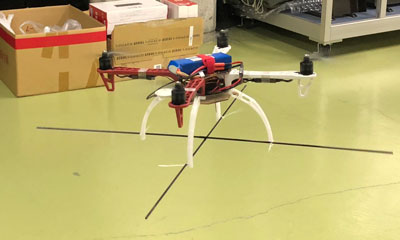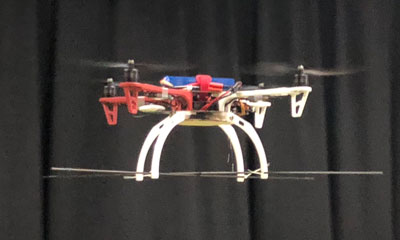THE THEME
The CDIO Academy 2018 theme:
What kind of future will drones bring, and how will they affect our daily lives?
Nowadays, we often hear news about latest developments, services or accidents related to drones. Due to the progress of MEMS (Micro Electro Mechanical Systems) technology for sensors and cameras, many small aerial vehicles (commonly called “drones”) are rapidly spreading all over the world. With their unique characteristics, drones are expected to be useful for many services such as photography, video recording, monitoring, inspection of infrastructure, pesticide spraying, and delivery. Perhaps the most challenging usage of drones is for delivery purposes, and many manufacturers are working on various technical solutions to tackle this problem. Delivery drones are expected to make our lives better because they will enable deliveries to places where infrastructure is insufficient (i.e., rural areas and islands), or to locations unreachable by humans (i.e., disaster areas). On the other hand, the rapid development of drones causes some concern about accidents and privacy issues, partly because laws and regulations related to drones have not been fully legislated. Tight regulations may limit the potential usage of drones. Engineers will continue to contribute to solving various issues surrounding drones and also to reduce similar concerns regarding new technologies. In this project, students will investigate and review various aspects related to drones (i.e., engineering, ethics, and economics) and propose concepts for the design of drones for future usage. Students will also be expected to demonstrate their solutions to these technical problems for future drones.


COMPETITION FORMAT
CDIO Academy 2018 will have four components: pre-assignments, pre-camp collaboration, the Academy Design Camp, and a pitching competition.
1. Pre-Assignments
Participants are expected to complete pre-assignments before coming to Kanazawa so that each team member has sufficient knowledge about the topic to facilitate discussion with their teammates.
Brief guidelines on how to complete each pre-assignment activity are provided in order to make the CDIO 2018 Academy successful. The activities involve the process of identifying the problems of drone usage, investigating the existing solutions related to those problems, and creating a concept proposal to solve the problem selected before arriving at KIT in June, 2018. Detailed information about the individual assignments is summarized in the pre-assignment document.
The Guideline document is available here. 
The Pre-assignment document is available here. 
2. Pre-Camp Collaboration
After completing several pre-assignments, students will be placed into teams of 5 students each and given access to the “3DEXPERIENCE” online collaboration platform. They will then share their ideas with their teams and work towards potential solutions to realize at the Academy Design Camp in Kanazawa.
3. Academy Design Camp
At the Academy Design Camp, teams will collaborate to improve their solutions related to the project question through research, discussion, building and testing. Teams will also build mock-ups using a 3D printer or other materials to demonstrate their ideas. Finally, teams will prepare and rehearse persuasive presentations.
4. Pitching Competition
Each team will perform their pitch in front of judges and the other Academy teams. The winning team will also present to the International CDIO Conference attendees at the closing session on the Conference (July 1st).